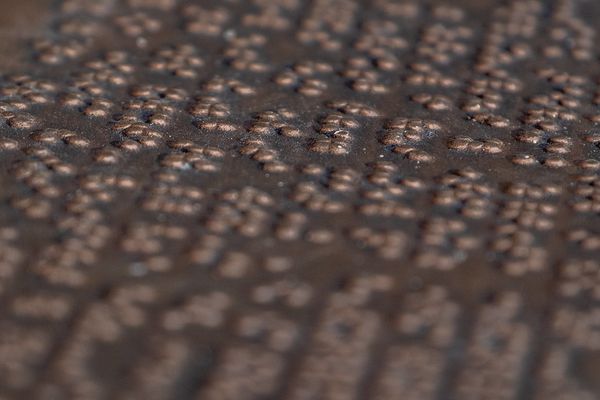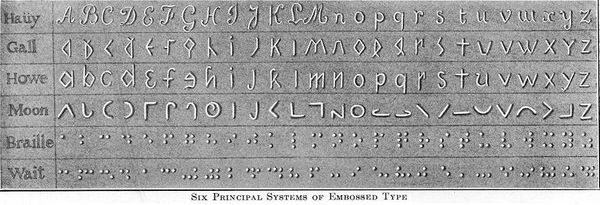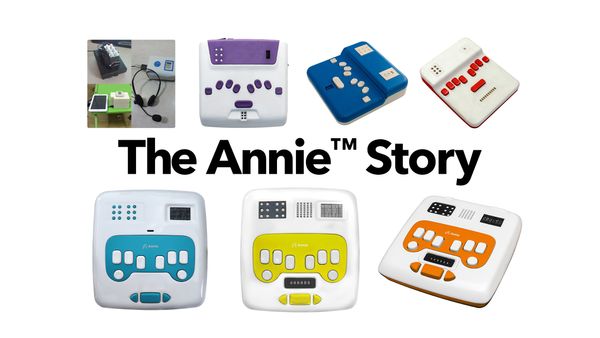The Creativity in Braille: Art for the Visually Impaired
Braille is rightly celebrated as a vital means of expression for people with visual impairments. The tactile script has helped millions of people read and write since its development in the 19th century. In recent years though, both visually impaired and sighted people have used Braille in creative ways such that Braille has taken on new dimensions of expression. One of the most prominent ways this has happened is through art.
A Different Way of Seeing Art
It’s pretty common to see signs exclaiming “don’t touch the exhibits” in art galleries and museums. While this might sometimes be an important instruction to preserve the exhibit, it also deprives those who cannot see the art of the pleasure of its experience - or at least limits it to a secondary experience of reading a description of it. There is a dearth of visual art that considers the perspective of those with visual impairments, and how perspectives can be a part of art itself.

Fortunately however, some artists are now turning to Braille as a medium of representing the perspectives and experiences of the visually impaired community. While the tactile form of the script encourages people with visual impairments to indulge in touch - and hence subverts typical forms of ‘visual’ art - it can also offer creative ways to visualize the script for sighted viewers.
The well-known sighted visual artist and painter, Roy Nachum, set up an exhibition called "BLIND" which combines painting with Braille signage. The paintings illustrate surrealistic images of a fantasy realm, and poems inspired by the paintings are incorporated into the painting in Braille, in an attempt to “test our reliance on what we see and force different viewers to re-orient their perception of a work by also employing their sense of touch.” Vijaya Chauhan makes sculptures with Braille imprints on various mediums like terracotta, ceramic, wood, metal and stone intended to “create a dialogue with the spectator,” inspired by conversations with her visually impaired roommates several years ago.

There have also been projects to bring Braille art to public spaces, such as through graffiti. The Braille Art project in Russia, one of the first street art festivals for the visually impaired community, included objects consisting of visual symbols and text written in Braille that talked about the achievements of visually impaired people - such as Mikhail Pozhidaev, a scientist from Tomsk who, having lost his eyesight, invented an operating system for the blind and Ray Charles, who has 17 Grammys - who have become successful in different areas of life. The project also encouraged visitors - visually impaired and sighted - to create their own Braille art with stickers that had letters written in the Braille alphabet, along with their Cyrillic analogues. In India, students at Jadavpur University, Kolkata created ‘The Graffiti Joint’, a Braille graffiti project that reads ‘subaltern.’ Ishan Chakraborty,the co-ordinator of the project and a person with visual disability, notes that “[g]raffiti, as an art form…[aims] to start a dialogue about various issues” and that “Braille graffiti...is particularly effective as it enables and encourages interaction between the blind and the visually abled.”
At the same time, there have been efforts to make existing art festivals accessible to people with visual impairments. Siddhant Shah, heritage architect and disability access consultant, gave tactile form to photographs at the Serendipity Art Fair in Goa, which gave visually impaired visitors a direct connection to the images, from fishing nets to boats, that would’ve been difficult to grasp otherwise. He’s expanded this approach to other spaces too, including the Anubhav Tactile Gallery in Delhi, or the City Palace of Jaipur, as well as the National Museum in Kuala Lumpur. The 2019 Kochi-Muziris Biennale (KMB) presented 25 open Braille books created to the benefit of its visually impaired visitors, complementing the biennale’s central theme of inclusion.
Evolving Art, Evolving Braille
Artists have found creative new ways for Braille to be used in their daily lives too. The Braille Music Markup Language (or BMML) for example, reorganises written music into a highly structured, easily searchable database, which visually impairede musicians can read with the Braille Music Reader (BMR). The BMR lets a visually impaired musician play sheet music out loud, and add notations such as fingerings to the score, just as sighted musicians do. The designer Kosuke Takahashi blended both visible and tactile characters in the same space to create a hybrid script called “Braille Neue” that anyone can read. The layout already employed in the Braille alphabet acts as a framework for the overlapping visual text, while also helping educate those who can see it about Braille equivalents.
Making Braille Art
The power - and beauty - of art lies in its ability to express a diversity of thought and feeling in inventive ways, taking advantage of what we come across in our daily lives to encourage new perspectives. It’s also an incredible outlet for any of our imaginations. Turning Braille into an artistic medium, then, brings the script into our everyday lives, rather than treating it as a mysterious medium that only a few people use. Just as sighted people can pick up a pencil or pen and doodle or sketch on paper, those with visual impairments can even draw using a Braille writer or a slate and stylus! For children, it’s also a fun way of learning Braille, as well as developing concepts of space, form, of looking with both hands, of getting used to maps, charts,and all the drawings that are so necessary to a well-rounded education.

At Thinkerbell Labs, we recognize the potential for Braille to be a playful medium, and have created our learning materials and tools on Annie to engage young learners in creative ways. Braille can be a mutual medium of expression between sighted and visually impaired artists and audiences, a creative tool, and a source of pleasure. All it takes is a little imagination.



